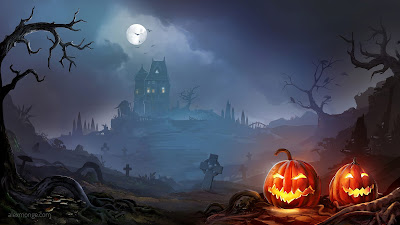Friends On the Other Side - Disney Villain Mash-Up Musical Analysis
One of my favorite singers is Thomas Sanders. His voice always brings a smile to my face, but this song in particular is one of my favorites that he has ever done. It's called Friends on the Other Side Disney Villain Mash-Up. It was released on February 14, 2019. It is composed by Jamahl Rawls. The musical accompaniment by Dennis Blount. The vocalists are Thomas Sanders, Terrance Williams, Jamahl Rawls, Vallerie Torres-Rosario, Leo Anderson, Foti Calabria, and Brittney Kelly. I have always been a fan of the Disney villains and their songs are almost always my favorite part of the movies they accompany. This song manages to sow them together in such a beautiful almost mesmerizing way. The individuals singing are all so incredibly talented. Almost all of them learned, memorized, and recorded this song in one day. When I have a bad day I turn this song on and I am singing along instantly with a smile on my face.
Harmonic Texture
I am not completely sure which harmonic texture this piece has. I am torn between Homophonic and Polyphonic. My immediate thought was it was Polyphonic because there are parts of the song where the lyrics overlap. However, I am left unsure because the musical accompaniment doesn't get disturbed when the lyrics overlap it always remains consistent. The melody remains the dominant force throughout the song. This makes me think it is Homophonic. Since there isn't any overlapping melody I will say that it is Homophonic. I find this interesting because a lot of traditional mashups are Polyphonic.
Range
This song has the advantage of having multiple vocalists to give it a wider range. Some of the vocalists' voices are very deep and low where some of the others can hit higher pitched notes. There is one spot, in particular, I would like to point out. When the song says "I got voodoo. I got hoodoo. I got things I ain't even tried." Thomas Sanders starts out the "tried" and then it seamlessly goes to Terrance Williams who can hit a much higher note than Thomas Sanders can. This gives the piece the ability to have a fairly large range.
Timbre or Tone Color
This song is filled with a wide variety of tone colors. It opens with Thomas Sanders's deep rich voice and then he shifts to a more gravely tone before the rest of the group joins in creating a resonating sound. They all hold a long note in harmony creating a droning sound. In combination, it sets up a very eerie feeling for the song. The song fairly consistently keeps that rich deep tone. It sprinkles in some female vocalists hitting higher notes in an almost piercing manner that adds to the overall feel of the song. The accompaniment also adds to the tone and gives it a heavy and dark feel.
Musical Mash-Ups
This song isn't a traditional music mash-up. A music mash-up is typically defined as "a creative work, usually in a form of a song, created by blending two or more pre-recorded songs, typically by superimposing the vocal track of one song seamlessly over the instrumental track of another, changing the tempo and key where necessary." The mash-ups that fit the traditional definition have not been around for very long the first was in "1967 Harry Nilsson album Pandemonium Shadow Show features what is nominally a cover of the Beatles' 'You Can't Do That' but actually introduced the 'mashup' to studio-recording. Nilsson's recording of 'You Can't Do That' mashes his own vocal recreations of more than a dozen Beatles songs into this track. Nilsson conceived the combining of many overlaying songs into one track after he played a chord on his guitar and realized how many Beatles songs it could apply to. This recording has led some to describe Harry Nilsson as the inventor of the mashup" I found all of this interesting considering there had to have been people who layered multiple songs into each other before this. I am curious if not "mash-ups" what where they called. Thomas Sanders' song was not made by taking pre-existing songs and editing them together digitally into one song. A type of song I am actually not particularly fond of. This song took only a few lyrics from many different songs as more of a reference to compose an entirely new piece.
Bibliography
“Friends on the Other Side - Disney Villain Mash-up | Thomas Sanders.” Www.youtube.com, Thomas Sanders, 14 Feb. 2019, www.youtube.com/watch?v=SeKbDldza9k&t=107s. Accessed 23 Sept. 2021.
“Mashup (Music).” Wikipedia, 6 July 2021, en.wikipedia.org/wiki/Mashup_(music). Accessed 23 Sept. 2021.
I used grammarly.com for my editor and I used mybib.com for my citations.


Test Comment
ReplyDeleteThis comment has been removed by the author.
ReplyDeleteHello! I had literal goosebumps after listening to the song you picked. I absolutely love Disney music, and this mash-up elevated the songs even more. My favorite Disney movie ever is Tangled, so when they all sang Mother Knows Best together, I got literal chills. I agree with you about the tone colors. That element is one of the biggest that stuck out to me. The difference in all their voices adds a certain kind of flavor to the mix of all the songs. I feel as if I were just listening and not watching the video, it would be difficult to count all the different tones given how many they created together. Here is one of my personal favorite Disney mash-ups by Jimmy Fallon featuring Kristen Bell. This one definitely also always puts a smile on my face.
ReplyDeletehttps://youtu.be/YjyHTUMhpXk